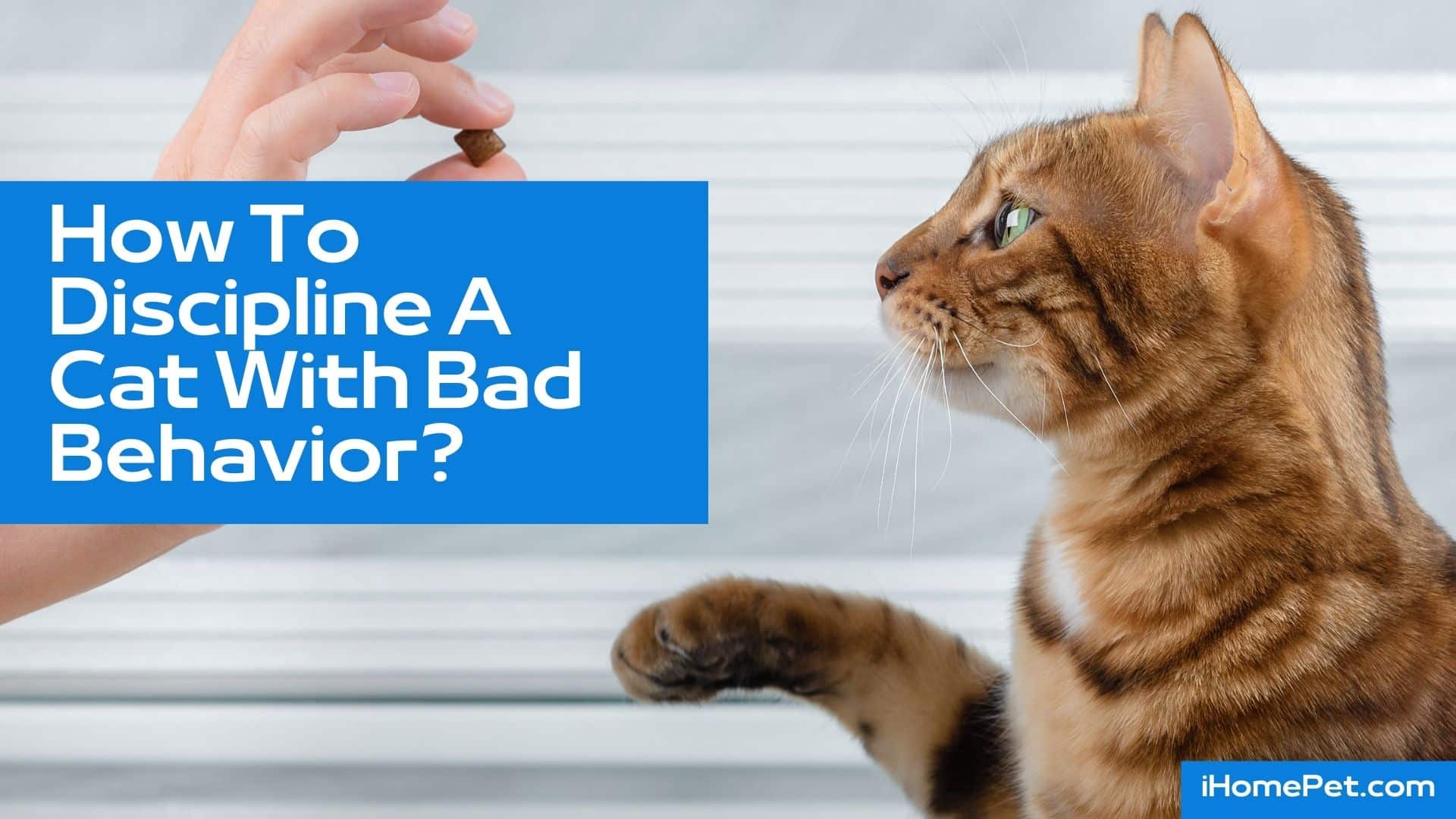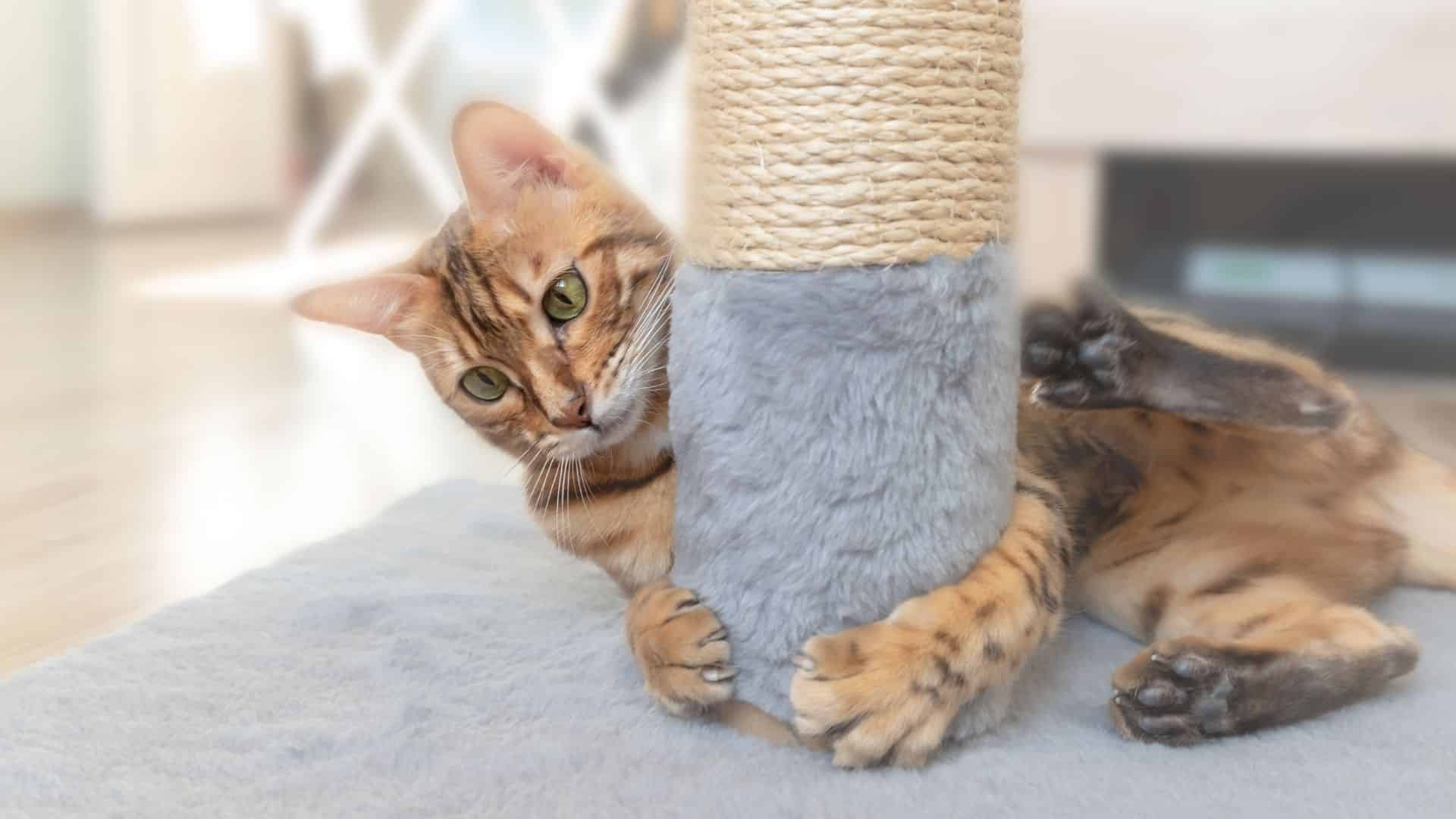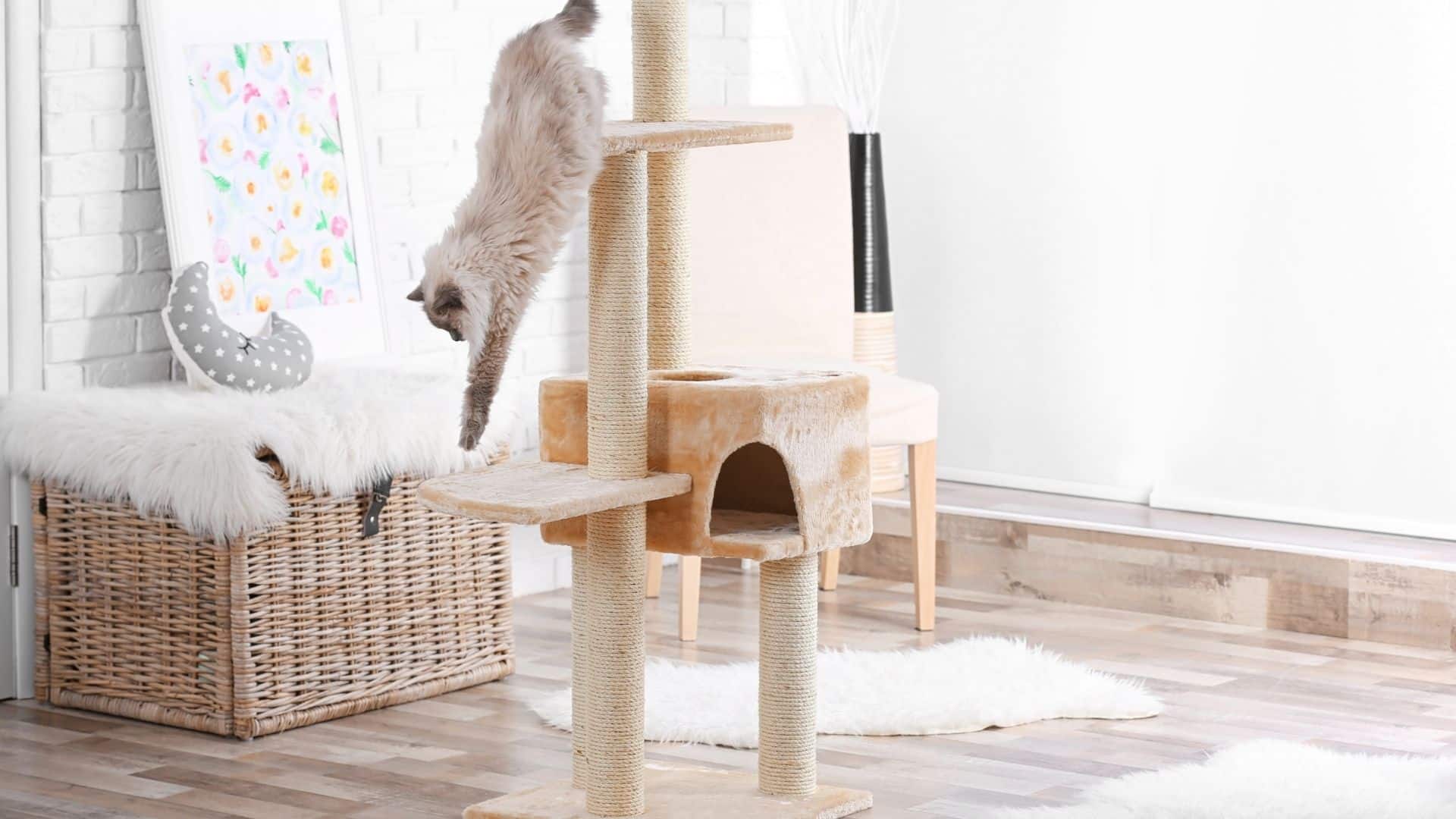Cats are very cute animals and can become wonderful pets for your family. Although they are animals, they tend to behave like humans at times as they grow and develop. It is important that you know how to discipline a cat.
Try to discipline her when she is a small kitten. It will give her an adequate amount of training, and you can expect positive behavior as she grows up. Proper discipline will not make your cat protest and throw tantrums. She will be able to obey your instructions and will do what you instruct her to do.
Physical punishment will not solve the issue and may even lead to aggression or fear in your cat. Instead, focus on positive reinforcement techniques such as rewards and praise when she displays desired behaviors.
Consistency is key to disciplining a cat, so make sure everyone in your family follows the same rules and boundaries. With patience and understanding, you can establish a strong bond with your cat while ensuring good behavior.
Training your cat is an ongoing process that requires time and dedication. It is important to set realistic expectations and understand that cats have their own unique personalities and annoying behaviors.
By using positive reinforcement techniques consistently, you can help your cat learn and adapt to desired behaviors over time. Remember to be patient and understanding, as it may take some time for your cat to fully grasp and comply with your instructions.
5 Things That Can Improve Your Cat’s Bad Behavior

A cat jumping into the kitchen counter can be a common behavior problem among pet owners. One way to address this issue is by providing your cat with alternative elevated spaces, such as cat trees or shelves, where they can climb and observe their surroundings.
Physically harming is not the best approach to correcting your cat’s unwanted behavior, as it can lead to fear and aggression. Instead, try using deterrents like double-sided tape or aluminum foil on the counter to make it less appealing for them to jump on. Remember, consistency and patience are key when trying to improve your cat’s behavior.
Use Positive reinforcement To Improve Your Cat’s behavior
Positive reinforcement can be a powerful tool for shaping a particular behavior and promoting learning. It involves providing rewards or praise to reinforce desired actions or behaviors, which can increase the likelihood of them being repeated in the future.
Additionally, using positive reinforcement techniques, such as rewarding your kitty with treats or praise when they choose to stay off the counter, can help reinforce desired behavior and discourage them from jumping up.
Install a scratching post
A scratching post is a common item used to redirect a cat’s natural urge to scratch onto a designated surface instead of furniture or other household items. Empty soda cans can make the situation worse because most cats are attracted to the sound they make when they are stepped on or crushed.
It typically consists of a sturdy base, a vertical post covered in sisal or carpet material, and sometimes includes additional features like dangling toys or platforms for climbing. By providing a scratching post, you can help protect your furniture while also promoting your cat’s physical and mental well-being.
Give your car more attention
Cat behavior can be improved by giving them proper mental and physical stimulation. Providing interactive toys, engaging in playtime, and setting up a designated scratching area can help redirect their energy and prevent destructive behavior.
Your cat’s attention can also be enhanced by providing them with a comfortable and stimulating environment. Creating cozy spots for them to relax, incorporating vertical spaces for climbing, and introducing puzzle toys can all contribute to their overall well-being and contentment.
Purchase additional cat furniture
When cats misbehave or show signs of boredom, providing them with more cat furniture can help redirect their energy and provide them with a designated space to play and explore.
Cat owners need to get creative in finding ways to keep their cats entertained and stimulated. This can include rotating toys, introducing puzzle feeders, or even setting up a cat-friendly indoor garden.
Use toys to correct bad behaviors
If you want to physically discipline your cat you must reconsider your approach. Physical discipline is not recommended for cats as it can lead to fear, aggression, and other behavioral issues. Instead, try using toys and positive reinforcement to redirect their behavior.
Toys can provide mental stimulation and help them release their energy in a healthy way. Additionally, consider consulting with a veterinarian or animal behaviorist for professional guidance on correcting any undesirable behaviors in your cat.
Cat Discipline: The Wrong and The Right Way
 Cats are not human beings and they would not understand your reasoning. These animals don’t understand the consequences of any situations like us. Don’t try to be very strict with your cat in terms of discipline. You should not punish your pet frequently for bad behavior.
Cats are not human beings and they would not understand your reasoning. These animals don’t understand the consequences of any situations like us. Don’t try to be very strict with your cat in terms of discipline. You should not punish your pet frequently for bad behavior.
Following that course of action, your pet will start to associate punishment with you. Instead of being a happy cat, she will start fearing you. With the passage of time, she will avoid your presence and the bond between you two will weaken.
Any form of disciplinary actions is not good if it means to cause pain to your feline friend. Negative stimulus to change certain bad activity of pet is one thing but it should be subtle not terrifying. Many times even the sweetest cat “misbehaves” which as an owner will not enjoy.
A loud and unfamiliar noise will quickly get her attention. Try to keep the sound harsh and low-tone to intimidate your cat. You can use the high pitch sound for praise and acts of good behavior. One of the best ways to distract is giving her a blast with spray bottle. If your kitten is showing negative behavior, get rid of the opportunity.
How to Discipline a Cat: Examples that Never Works
Imagine that you come home after a long tiring day at work. When you enter, you find your home in a complete mess. Instead of knowing go to train a cat, the owner acts on his instincts and does something which doesn’t work.
The cat is completely afraid and hides somewhere. After you call her multiple times, she does not come out and you feel terrible. From studies, it is analyzed that following disciplinary methods does not work with cats:
- Constantly yelling or talking in a loud voice
- Raising hand in an aggressive manner
- Beating the cat on her face or palms
- Any other type of physical contact with cat
- Spraying on her with water pistol
Disciplining your cat’s bad behaviors can be a challenging task, but it is essential for creating a harmonious living environment. One effective approach is to use positive reinforcement techniques, such as rewarding good behavior with treats or praise.
Understanding Cat Behavior for Effective Discipline

Anyone who has lived around a cat knows they learn quickly and have a mind of their own. If they are misbehaving, you need to show them the correct behavior. There are disciplinary ways that works or cause additional problems to the pet owners.
First, you need to understand the behavior of your cat. They don’t do so something to irritate you or get back to you. They might be urinating outside the litter box because of their instincts. You need to analyze the situation and understand why your cat is showing such behavior.
Once you grasp the situation, you will be able to train your furry friend effectively. If you cat is not using the litter box, it’s time to play detective with her. Change the box or move it to some other place in your house. Don’t forget to check the medical complications like blood in urine, weight loss etc.
Once you figure out the problem, your feline friend will start using the litter box. Kittens bite everything in order to investigate them. Right from the tender age, you need to teach your pet not to scratch hands. If she bites you, don’t take your hand away immediately.
Getting Rid of Undesirable Behavior of Your Cat
Never push the palms of your hand into the face of cat. This is not how to discipline a cat. If you swing your hand, she will take it as a challenge to fight. Inflicting pain will have negative consequences on your relationship with cat.
Don’t provoke her because it will cause serious aggression problems. Immediacy is important and you can use it as soon as your cat starts misbehaving. It is important to understand why your cat is behaving in an abnormal manner.
Once you understand the reason, you will be able to fix her problems. This will make your cat disciplined and you will be able to live peacefully with her. As pet parents, you want to remove bad habits by coming up with effective methods to promote good behaviors.
Additional Tips To Fix Aggressive Behavior In Most Cats
Cat bites are a sign of aggression in older cats. It is important to understand the underlying causes of this behavior in order to effectively address it. Some common reasons for aggression in cats include fear, territoriality, and redirected aggression.
By identifying the trigger for your cat’s aggressive behavior, you can work towards finding a solution that promotes a more peaceful and harmonious environment for both you and your feline companion.
When your cat behaves calmly and non-aggressively, you can achieve positive behaviors by using training techniques like rewards and praise. Providing your cat with plenty of mental and physical stimulation through interactive toys and playtime can help redirect their aggressive tendencies towards more appropriate outlets.
What Can Cat Parents Do When Correcting Bad Behavior In Cats?
By teaching them new cat tricks, cat parents can redirect their attention and energy towards positive behaviors. If a cat jumps into the air, it can mean that they are exhibiting playful behaviors or trying to catch something.
It is important for cat parents to provide appropriate outlets for their cat’s energy, such as interactive toys or play sessions, to prevent them from engaging in destructive behaviors like jumping on furniture or knocking things over.
Last Updated on 13/02/2024 by Karen Snow
Hi! I’m Karen and a certified dog lover. As a freelance writer and blogger, I do my best to squeeze in some time with my dogs, learning more about the way they act and how I can make sure that they continue to stay well-cared for by yours truly.
My dogs have helped me through a lot, and this is my way of giving back to them! Besides animals, I also love to travel and cook, having explored my country’s restaurants and unique places. Follow me as I show you all the amazing tips and bits of information I learn along the way about our furry friends!
